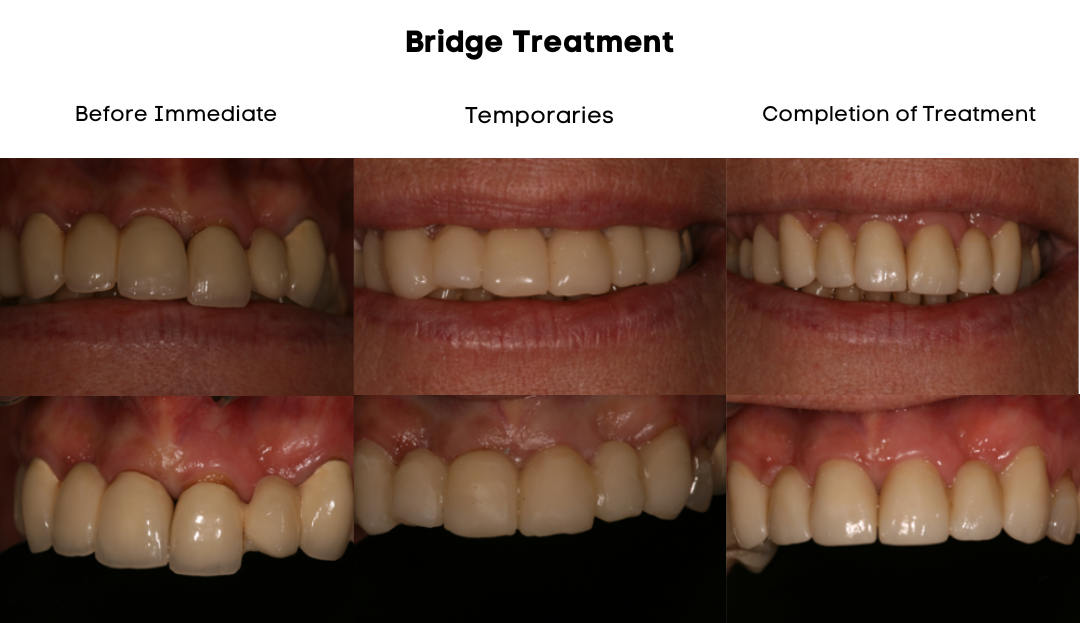DENTAL BRIDGES
Dental Bridges are false teeth that replace missing teeth by anchoring to one or two of the neighbouring teeth. The false tooth is known as the pontic and the anchoring teeth are known as abutments.
Conventional Bridges: This involves preparing the neighbouring teeth (abutments) so that they become like crowns/caps and the false tooth (pontic) is then fused to the abutment crowns. This type of bridge can be made in gold, ceramic, or gold/ceramic combination.
- The average lifespan for dental bridges is around 10-15 years, this is much longer than adhesive bridges.
- These offer a fixed option for replacing gaps for those who do not wish to have implant surgery.
Maryland bridges: involve no preparation or very little preparation of the inside of one or two neighboring teeth (abutments) and the false tooth (pontic) is then bonded using wings to the inside wall of the neighboring teeth. This type of bridge can also be made in gold, ceramic or gold/ceramic combination.
- Very little or no preparation of the neighbouring abutment teeth is necessary thus preserving them for longer.
- Often cheaper than conventional bridges as less clinical time and lab time is required.
- Likelihood of root canal treatment becoming necessary with maryland bridges is very remote.
Cantiliver Bridges: This type of bridge involves capping just one neighbouring tooth (abutment) and the false tooth (pontic) bonds to this one neighbouring tooth. This type of bridge can also be made in gold, ceramic or gold/ceramic combination.
- De-bonding of this bridge is more common than conventional bridges.
- Average lifespan is around 5 years, although some last longer.
- Generally unsuitable for back missing teeth and more suited for missing front teeth

Why Choose Us
Frequently Asked Questions
How often should I visit the dentist?
What should I do in a dental emergency?
Do you offer services for kids?
What are my options for replacing missing teeth?
Is teeth whitening safe?
Ready to Book Your Appointment?
Contact us today to schedule your visit and take the first step toward a healthier smile.
